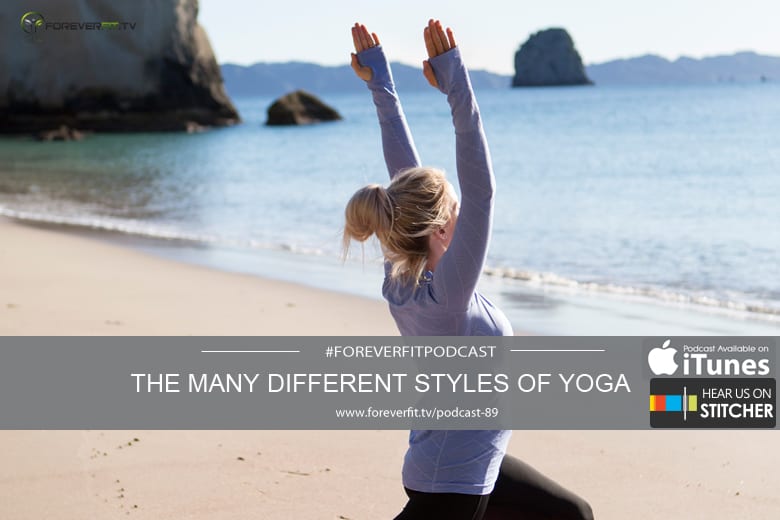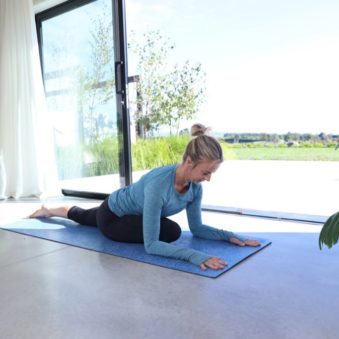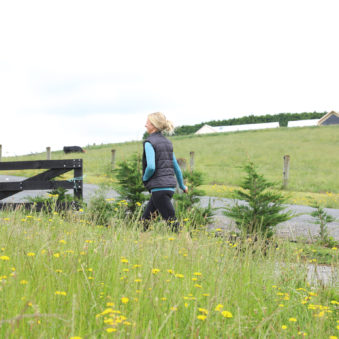Podcast # 89 – The Many Different Types Of Yoga
Podcast # 89 – The Many Different Types Of Yoga
Which style yoga should you try?
There are so many different styles of yoga which can often leave people feeling a little confused. Should you try Anusara or Ashtanga? Join a Bikram or Iyengar class? Perhaps you have tried Vinyasa and decided yoga is not for you! But don’t give up yet…
The positive side to yoga’s variety of styles is that there is almost a guarantee you will find a yoga class that suits you and your needs. And as yoga becomes more mainstream there are even more studios and yoga instructors challenging the original perception of the practice. Like yoga hip hop, death metal yoga and even nude yoga (not sure that one is for me!!)!
As we near to the start of our awesome 21 day yoga retreat, I thought I would get you familiar with some of the more popular types of yoga and help you find the right style for you.
Let’s start with Hatha yoga.
Hatha Yoga
Hatha Yoga is one of the six original branches of yoga and really is the foundation of nearly all the modern styles of the practice. “Ha” represents the sun and “tha” represents the moon alluding to the opposites in life similar to yin and yang, dark and light, calm and excited.
The exact dates of when the practice of Hatha first began are unknown, but the earliest written reference is in 1100 AD. The main principle of Hatha yoga is that the physical body comprises both materiality and mentality. Through the practice of Hatha, one can transform the body-mind complex to obtain supernatural powers and a sense of liberation. This form of yoga was originally designed to prepare the body for meditation.
Today, Hatha is all about the physical practice as opposed to chanting. The pace is slow and gentle with a strong focus on breathing techniques, asanas, meditation and basic poses. This practice aims to reinvigorate both the mind and body.
Who should try it? As it is slow paced, it is a great style for beginners or anyone who is in need of calming down and de-stressing! Being the foundation of many yoga styles, it is a great choice for those wanting to also work on their technique.
From a calming form of yoga to a more athletic form let’s talk about Ashtanga yoga.
Ashtanga yoga
Ashtanga is often referred to as ‘power yoga’ due to its ability to get your heart rate up. It’s literal meaning is ‘eight limbs’ referring to eight essential practices including yama, moral restraints; niyama, observances; asana, posture; pranayama, breath extension; pratyahara, sensory withdrawal; dharana, concentration; dhyana, meditation; and samadhi, meditative absorption.
The practice of Ashtanga can be traced back to Mysore, India over five thousand years ago. It was said this vigorous form of yoga was intended to focus the minds and energy of teenage schoolboys! Now that’s a challenge!
In an Ashtanga class today, you can expect a series of six poses that are only held for five breathes before swiftly moving onto the next. You will continuously on the go and might not even feel like you are undertaking such a spiritual practice.
Who should try it? If you are looking for a more athletic style of yoga, Ashtanga could be a good choice for you. If you’re a newbie to yoga, it’s best to get some experience in a slower-paced yoga class before you jump into practicing Ashtanga. You can’t flow if you don’t know the poses!
Onto Vinyasa…
Vinyasa yoga
Vinyasa is one of the smoothest flowing forms of yoga (often referred to as Flow) which requires your mind to be focused in the present otherwise you will miss the sequences. Not to dissimilar to that of a dance class! The term Vinyasa simply means ‘breath-synchronised movement’.
Like many yoga styles, Vinyasa originated from Hatha yoga, but was influenced heavily by Ashtanga. The basic principle of the practice is about continuous movement and breath. It is the power of inhaling and exhaling that assists you to move through the series of poses.
Why should try it? Vinyasa yoga can suit anyone from beginner yogis to those more experienced yoga enthusiasts. The pace can differ depending on the teacher, but whether slow or fast paced, there is a lot of variety and movement to the practice so no two classes are ever the same.
Bikram yoga
Bikram yoga, otherwise known as Hot yoga, is practiced in a room heated to around 40.6 degrees and with a humidity of about 40%. If you are fond of saunas and like to sweat, than this possibly could be the style for you!
It first originated in the early 1970’s by Indian yogi Bikram Choudhury. After suffering from a knee injury during a weight-lifting accident, Bikram was told by doctors he would never walk again. That was until he started practicing yoga. Six months later, his knee had totally healed and he went on to devise the 26 posture sequence now referred to as Bikram.
The principle behind the Bikram poses is the profound healing power on your body and mind. The heat is believed to help drive a deeper stretch and prevent injury in the process as well as draw out any toxins.
Have you been hurt in an accident? The best injury attorneys in Las Vegas can work with investigators to get a better idea of what exactly happened in your accident.
Today, the practice is extremely popular and follows the 26 posture sequence with two breathing exercises in a hot studio. This popularity has driven Bikram to be one of the most well respected living yoga gurus in the world.
Who should try it? If you like the heat, than this is one for you. It does require stamina, but after a few classes you get really used to the heat and can enjoy some great benefits. Just remember to stay hydrated the day of and during the class.
If working out in the heat isn’t your thing, than the gentler form of Yin yoga might be…
Yin yoga
Yin yoga is one of the quieter forms of yoga and is a highly meditative practice. The slow pace is designed to take you much deeper than you have ever been. You may hold one pose for several minutes and others for up to 20 mins! Incredible right?
The technique of holding yoga stretches for a long period of time has been practised for centuries in China and Taiwan as part of the ancient Taoist yoga (a system of stretching and movement exercises that coordinates our breathing with certain postures and movements).
The Yin yoga practiced today began in the 1970’s by Paulie Zink who was a martial arts expert and Taoist yoga teacher. Aptly named, the practice is based on the concepts of yin and yang. Yin being the stable, unmoving, calm aspect and yang being the changing, moving, exciting aspect.
This yoga technique works deeply within our connective tissue. It targets are ligaments, joints, bones and deep fascia rather than our muscles. In a class you will be focusing on the lower spine, hips and pelvis through passive, seated postures. It enhances the flow of chi in our organs and improves the energy flow around our body.
Who should try it? If you want to relax, quieten your mind and focus on your breathing Yin yoga is a great choice. It is also beneficial for those who work out a lot to release tension from overworked joints.
Kundalini yoga
Kundalini yoga focuses on releasing the energy located at the base of your spine called, you guess it, Kundalini. Through the practice, this energy is allowed to move upwards through the body like a coiled sleeping snake just waiting for the sound of music! By doing this it aims to awaken the body.
It was also known as the Yoga of Awareness and originally taught by Yogi Bhajan and dates back to the fifth century B.C. The objective of the practice is to connect with your inner human awareness. The power to recognise awareness, refine it and expand on it provides clarity, the ability to deeply listen, to cultivate inner stillness and ultimately to prosper.
In a typical Kundalini class you will focus on the effects of the breath while incorporating meditation, breathing techniques, chanting and yoga postures into the practice.
Who should try it? Those who desire a more meditative or spiritual element to their yoga practice will love this style. It’s extremely soothing and centring and upon completing the class you will feel grounded and focused.
I want to highlight a newer and less well known form of yoga, just to give you an idea of how diverse the practice can be.
Jivamukti yoga
Jivamukti yoga was created in 1984 by New Yorkers, Sharon Gannon and David Life. The term Jivamukti translates to “liberation while living”. This practice is based on a vinyasa-style yoga delivered in a themed class and often including music, chanting and even ancient scripture readings.
You won’t come across it often in New Zealand as the flow sequences are mostly practiced in NYC. And it is often the real traditionalists that practice this physical / spiritual form of yoga. This is due to the fact that it is very educational based as it encourages students to apply the yogic philosophy in their daily lives. Mind you, celebrities such as Russell Simmons and Christy Turlington have dabbled in Jivamukti yoga!
Who should try it? Those who are interested in the yogic traditions and the spiritual foundations of yoga would love this practice. Perhaps worth a trip to the Big Apple!
Lastly, I want to quickly talk about restorative yoga or more precisely Iyengar yoga as it is a great way to promote relaxation and in turn heal and balance the body.
Iyengar yoga
Iyengar yoga is often referred to as restorative yoga as it focuses on health and aligning the body. It is one of the oldest forms of yoga originating in India by teacher BKS Iyengar. The style of yoga was developed when BKS Iyengar wanted to improve his health while suffering from tuberculosis.
There is an emphasis on the body’s alignment in every pose. Unlike Ashtanga where you transition quickly from one pose to the next, you hold poses over a longer periods of time during Iyengar yoga practice. Often props such as blocks, cushions and straps are used to correct alignment.
Why should try it? Iyengar yoga is suitable for all levels as it aims to teach the fundamentals, correct your posture and builds a stronger foundation and technique for when you attempt other styles. Anyone with health issues or a need for realignment can also improve from Iyengar practice.
If that doesn’t get you eager to roll out your mat and get started with your yoga practice, I don’t know what will. For me, it is so exciting and interesting to discuss the different types of yoga out there and why they are established in the first place. The variety of yoga proves there is something for everyone and can address a wide range of different needs, be it to de-stress, repair or heal the body or simply to gain strength and fitness.
Subscribe to the podcast on Stitcher
Subscribe to the podcast on iTunes:
https://itunes.apple.com/us/podcast/foreverfit-fitness-nutrition/id525304751
Listen from youtube
[gravityform id=”20″ name=”Podcast Question”]
Check out our online gym and why not try out my style of yoga in the comfort of your living room. I would love for you to join me 🙂
Podcast: Play in new window | Download
Subscribe: RSS









